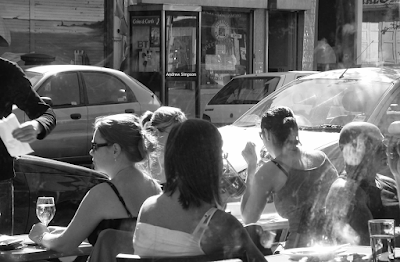Now I don’t usually do anniversary stories, for the simple reason that once you start ….. everyday can offer an event which it could be argued is worth a story.
 |
| New Money Snap, 1971 |
But 1971 is perhaps a year which shouldn’t go unremarked.
And here I confess it is purely a personal response.
It was my second year at the College of Commerce, or as we called it the College of Knowledge, which was situated on Minshul Street in the heart of the city.
That location proved a pretty neat opportunity to dodge going to the library and instead exploring all that Manchester had to offer, which for a lad from south east London was a lot.
I got to see the Northern Quarter before it became the Northern Quarter, spent most lunch times in one of the many Chinese and Asian restaurants which offered three course meals for three shillings during the midday lunch rush and explored all the twisty turny streets of character.
And for those who wonder about just what a three shilling meal was, 1971 was the year when the price became 15p, which seems an even more outlandish charge for a starter, main course and pudding.
At the time of Decimal Day there was that widespread belief that businesses would round price up, and that some people would be confused.
I can’t now remember if prices did go up, or just how far people were baffled by the new currency and its relation to £.s.d.
But I did recently come across the New Money Snap game which was to be played at home by people of all ages as preparation for the changeover.
I had completely forgotten it, but in turning out some old family stuff, I came across our copy.
The instructions point out that “The rules for ‘New Money Snap’ are the same as for ordinary snap with the additional rule that snap can be called where the money value is the same”.
Our pack is still in pristine condition, which rather makes me think that no one was at all confused, or worried about the changeover.
Just whether Julia paid for her copy of the LP Tapestry by Carol King in new money I have no idea, but sometime late in that year I sat listening to it in her room in Fallowfield.
 |
| Before the haircut, 1971 |
It was and remains one of my favourite LP’s and a copy has sat with the vinyl collection from that time.
That said back then, I don’t remember me thinking that this was a seminal moment, although later that year the hair cut might have been regarded as such.
Like most students I had shoulder length hair which on occasion was parted down the middle, but even 50 years ago the warning signs were there that I was on the way to losing it, and on a whim one Tuesday morning I went “skinhead”.
The barber’s was on Portland Street in what is now the Ibis Hotel facing Piccadilly Gardens. It was one of those where you stepped off the street down a flight of stairs and into the room. I can’t remember who was more surprised, me or the barber and the assorted other customers, but in a mater of minutes it was gone, and for a short while I was the “skin head student” at the College.
 |
| 50 years on |
Lecturers thought I must have been going for an interview, and friends were baffled.
Now 50 years on, there is very little left to cut, so 1971 marked a moment of transition.
Pictures; playing cards from New Money Snap, 1971, and pictures from an album, from the collection of Andrew Simpson
*Tapestry, Carol King, 1971, Side 1 "I Feel the Earth Move,"So Far Away", "It's Too Late", "Home Again" "Beautiful", "Way Over Yonder", Side 2 "You've Got a Friend”, "Where You Lead”, "Will You Love Me Tomorrow?" "Smackwater Jack","Tapestry"


















































